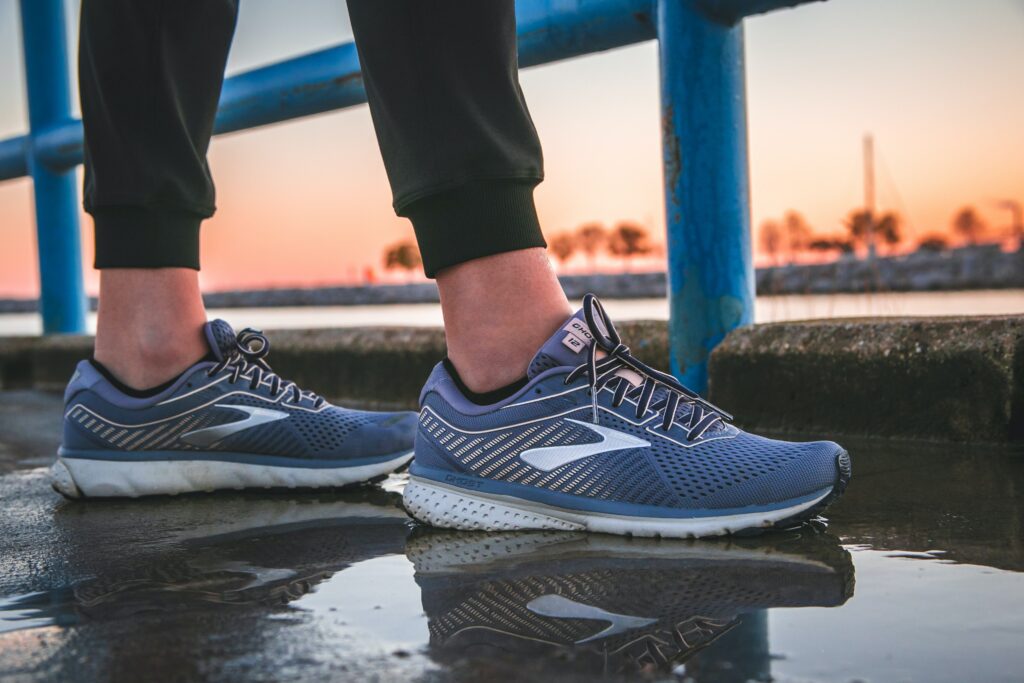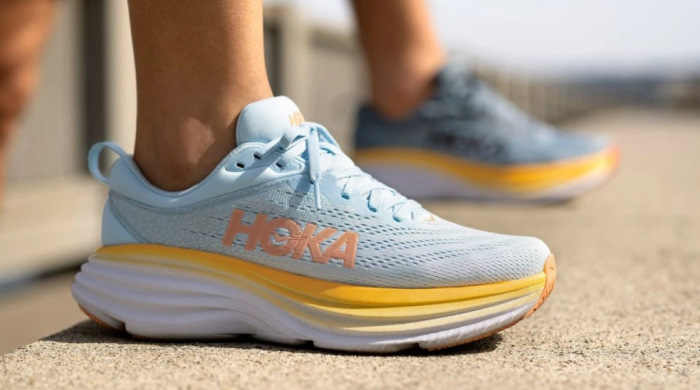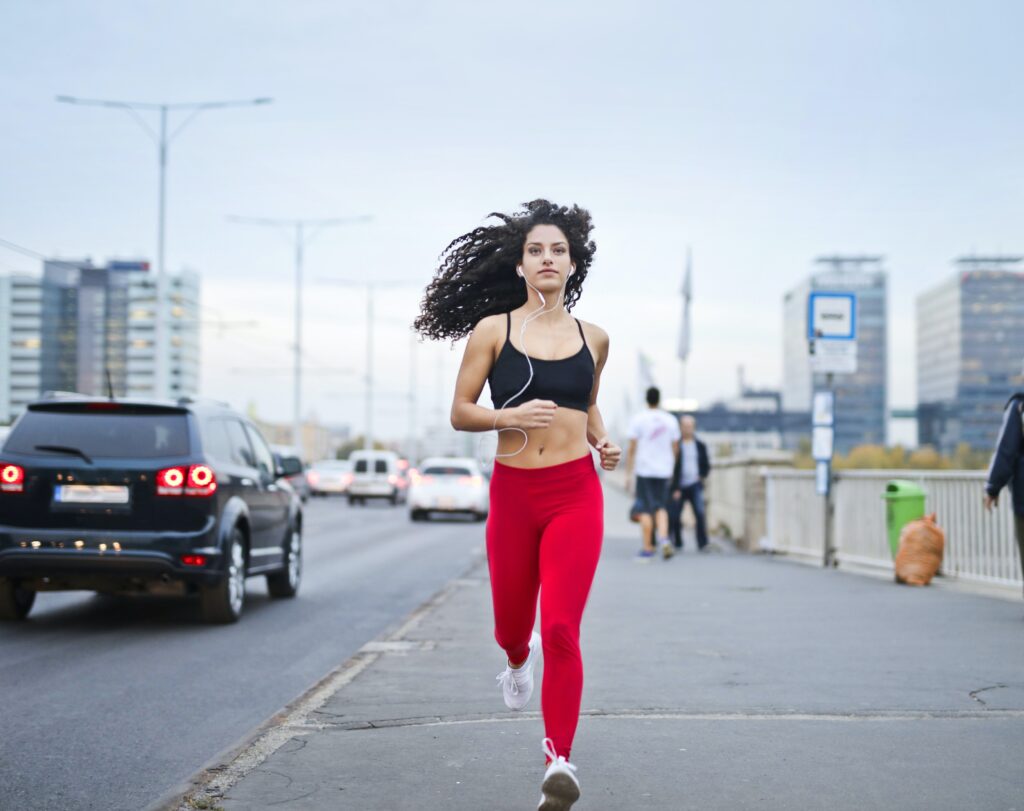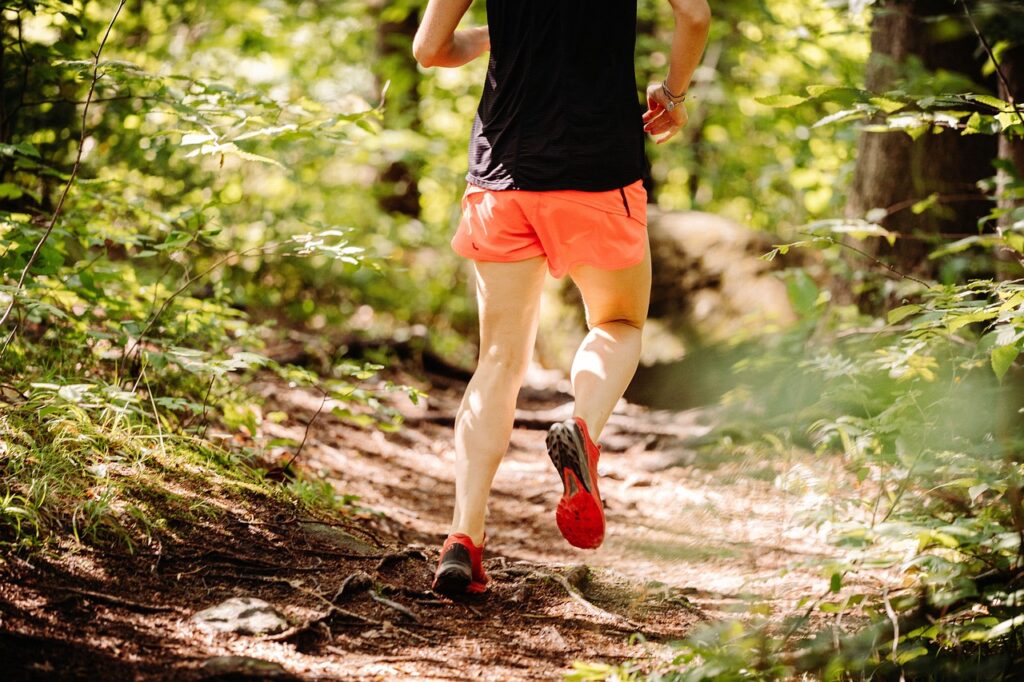When it comes to choosing the right running shoes, there are countless brands and models to choose from. Two popular options are Brooks and Hoka, each with its own unique features and benefits. Both have a strong following and offer a range of shoes for both road and trail running. Our comparison of Brooks vs Hoka will factor in the pros and cons of each with the goal of helping you determine which brand is the best fit for your running needs

Brooks Running Shoes
First, let’s take a look at Brooks. Founded in 1914, Brooks has a long history of producing high-quality running shoes that cater to a variety of runners. Known for their comfort and durability, Brooks shoes are a popular choice for both road and trail runners.
One of the standout features of Brooks shoes is their cushioning. The brand uses a variety of cushioning technologies in their shoes, such as BioMoGo DNA, which is a responsive and adaptive foam that adapts to your foot strike and provides a personalized feel. Brooks shoes also feature a plush, padded tongue and collar for extra comfort, as well as a supportive heel counter to keep your foot in place.
Another key aspect of Brooks shoes is their support. Many of their shoes, particularly those in the stability category, feature technologies such as the GuideRails Holistic Support System, which helps to guide and support your foot as you run. This can be especially helpful for runners who overpronate (roll inward too much) or have other foot or gait issues.
In terms of durability, Brooks shoes are known for their high-quality construction and materials. They use a variety of materials in their shoes, such as mesh uppers for breathability and synthetic overlays for added support and structure. They also use durable rubber outsole compounds that are designed to withstand the wear and tear of running.

Hoka Running Shoes
Now let’s take a look at Hoka. Founded in 2009, Hoka is a relatively newer brand compared to Brooks, but they have quickly gained popularity among runners. Known for their ultra-cushioned and supportive shoes, Hoka is a great option for runners who want a more cushioned, comfortable ride.
One of the standout features of Hoka shoes is their cushioning. The brand is known for using thick, soft foam in its midsole, which provides a very plush, cushioned feel. This can be especially beneficial for runners who need extra cushioning to protect their joints, or for those who are prone to foot or leg fatigue.
Hoka shoes are also known for their support. Many of their shoes feature a variety of supportive technologies, such as an injected TPU (thermoplastic polyurethane) heel counter for added stability and a rocker-shaped sole for a more natural, efficient gait. These features can be especially helpful for runners who need extra support or who have gait issues.
In terms of durability, Hoka shoes are also known for their high-quality construction and materials. They use a variety of materials in their shoes, such as breathable mesh uppers and durable rubber outsole compounds that are designed to withstand the wear and tear of running.

Brooks vs Hoka: Road Running
For road running, both Brooks and Hoka have a wide range of options to choose from. Brooks has a variety of road shoes that cater to different types of runners, including neutral, stability, and speed options. Their shoes feature technologies such as BioMoGo DNA cushioning, the GuideRails Holistic Support System, and a supportive heel counter, which can be beneficial for runners looking for comfort, support, and stability.
Hoka also has a variety of road shoes to choose from, including neutral, stability, and speed options. Their shoes are known for their ultra-cushioned midsole, which provides one of the softest rides available for a running shoe.
Brooks is a well-known and respected brand in the running community, known for their comfortable and supportive shoes. One of their popular road running shoes is the Ghost, which offers a responsive and cushioned ride. The Ghost also has a DNA LOFT midsole, which provides a soft and springy feel underfoot.
One pro of the Ghost is its versatility – it’s suitable for runners of all paces, from leisurely joggers to those looking to set personal records. The Ghost also has a comfortable fit, with a plush and padded tongue and collar.
On the downside, some runners have reported that the Ghost is not as durable as other road shoes on the market. The outsole may wear down quickly, especially for runners who log a lot of miles.
Hoka is another popular brand, known for their maximum cushioning shoes. One of their road running shoes is the Clifton, which has a soft and bouncy ride thanks to its thick EVA midsole. The Clifton also has a responsive feel, making it suitable for faster paces.
One pro of the Clifton is its cushioning – it’s perfect for runners who need extra support and protection for their joints. The Clifton also has a wide toe box, which allows for a more comfortable and natural fit.
However, one con of the Clifton is its weight – it’s one of the heavier road shoes on the market, which may not be suitable for runners looking for a lightweight and agile shoe. The Clifton also has a high stack height, which may be awkward for runners who are used to a lower-profile shoe.

Brooks vs Hoka: Trail Running
Brooks and Hoka both offer well known trail running shoes. The best known offering for these two are the Cascadia for Brooks and the Speedgoat for Hoka.
Brooks has a range of trail running shoes, including the Cascadia, which is a popular choice for off-road adventures. The Cascadia has a sturdy construction, with a tough outsole that provides excellent traction on a variety of surfaces. The Cascadia also has a responsive feel, making it suitable for both fast and slow paces.
The Cascadia is famous for its durability – it’s built to withstand the rigors of the trails, with a sturdy construction and a tough outsole. The Cascadia also has a comfortable fit, with a padded tongue and collar and a roomy toe box. Many thru-hikers have been using the shoe for 2000+ mile hikes, a testament to its solid construction.
However, one con of the Cascadia is its weight – it’s on the heavier side, which may not be suitable for runners looking for a lightweight and agile shoe.
Hoka also has a range of trail running shoes, including the Speedgoat, which is a popular choice for off-road adventures. The Speedgoat has a responsive and bouncy ride thanks to its thick EVA midsole, and a tough outsole that provides excellent traction on a variety of surfaces.
A top pro of the Speedgoat is the large amount of cushioning – it’s perfect for softening the impact of striking the ground, particularly for your knees. Many ultramarathoners swear by this shoe as well as casual older runners who need more cushioning to make running enjoyable.
However, the Speedgoat has a high stack height, which may be awkward for runners who are used to a lower-profile shoe. We recommend trying on a pair and taking a stroll around the store to see if the stack height is right for you.
Brooks vs Hoka: Which is Best?
Both of these brands offer top-notch offerings in both the road and trail categories. While you can’t go wrong with either, we’ve boiled this down to one simple rule.
If you need lots of support and cushioning, go with Hoka. The stack height may be tough to get used to, or it may not bother you at all. Many runners find the maximal cushioning and support features help alleviate their problems with Achilles tendonitis.
If you are a neutral runner who simply needs a reliable shoe with medium cushion, go with Brooks.
If you can’t decide, purchase both! Many retailers accept returns if you’ve only tried the shoe on in your home to get a feel for the fit.
